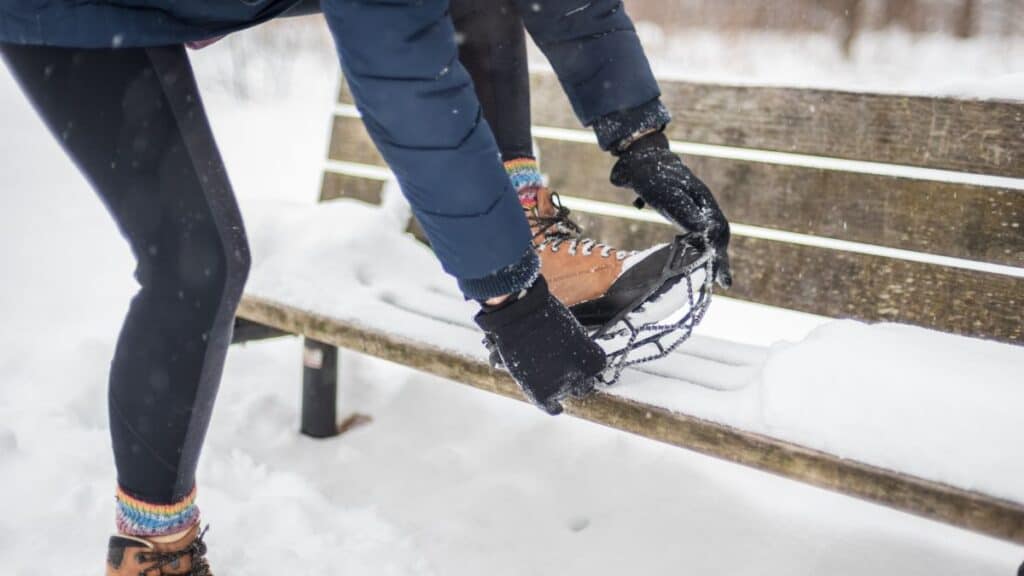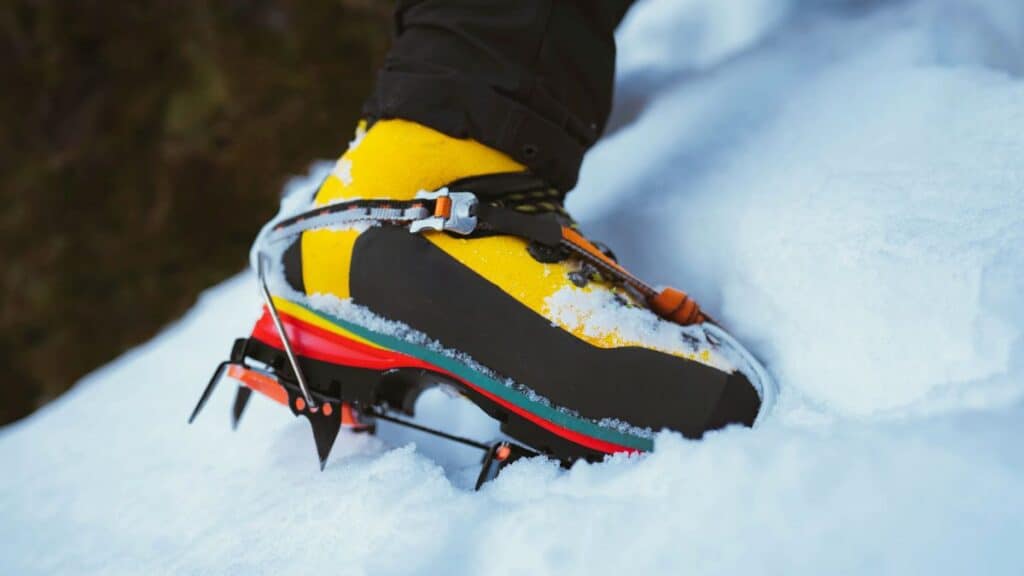
When hiking in snowy or icy conditions, it is important to have the proper gear to ensure safety and prevent injuries. One essential gear for winter hiking is microspikes!
However, you may find yourself wondering when exactly one should be using microspikes.
Microspikes are best utilized when encountering icy or slippery surfaces during outdoor activities, such as hiking, walking, or running in winter conditions. They provide enhanced traction and stability, reducing the risk of slips and falls, and are particularly effective on packed snow, icy trails, or icy pavement where regular footwear alone may not offer sufficient grip.
Keep reading to learn more about the specific scenarios in which someone would most benefit from using microspikes.
When to Use Microspikes
Microspikes are a popular traction device used by hikers to provide grip on slippery and icy terrain. They are lightweight, easy to use, and can be a lifesaver in certain conditions.
Here are some situations where microspikes are particularly useful!
Winter Hiking
Microspikes are a must-have for winter hiking. They can provide the necessary traction to keep hikers safe on icy trails.
When hiking in snowy terrain, microspikes can help prevent slipping and sliding, making it easier to maintain balance.
They can also provide added confidence and peace of mind when hiking in winter conditions.
Icy Trails
Microspikes are ideal for hiking on icy trails. They can provide the necessary grip to prevent slips and falls.
Even when hiking on packed snow, microspikes can provide added traction and stability. They are especially useful when hiking on steep trails, where a slip or fall could be dangerous.
Snowy Terrain
Microspikes can be useful when hiking in snowy terrain. They can provide added traction and stability, making it easier to maintain balance on soft, slippery snow.
They can also help prevent postholing, which can be tiring and time-consuming. Microspikes can be particularly useful when hiking in areas where the snow is packed down and icy.
Steep Terrain
Microspikes are a must-have when hiking on steep terrain. They can provide the necessary traction to prevent slips and falls on steep inclines.
They can also help hikers maintain balance on rocky terrain, where slips and falls can be especially dangerous. When hiking on steep terrain, it’s important to use microspikes that have longer spikes for added grip.
Mixed Conditions
Microspikes can be useful in mixed conditions, where the terrain is a mix of snow, ice, and rock. They can provide added traction on icy sections while still allowing hikers to maintain balance on rocky terrain.
When hiking in mixed conditions, it’s important to choose microspikes that are versatile and can provide grip in a variety of conditions.
In conclusion, microspikes are a valuable tool for hikers who want to stay safe and maintain balance on slippery and icy terrain. They are lightweight, easy to use, and can be a lifesaver in certain conditions.
When choosing microspikes, it’s important to consider the terrain and conditions you’ll be hiking in and choose microspikes that are appropriate for the situation.

When to Use Crampons
Crampons are a type of traction device that is used in icy and snowy conditions. They are designed to provide a strong grip on slippery surfaces, making them ideal for mountaineering, ice climbing, and other winter activities.
Here are some scenarios when using crampons are recommended:
- Steep Ice or Snow: When the terrain is steep, and the snow or ice is hard, crampons are essential. They provide the necessary traction and stability to ascend and descend safely.
- Mixed Climbing: When the terrain includes ice and rock, crampons are useful for the ice sections. They can be attached to mountaineering boots to provide the necessary grip to climb the ice.
- Glacier Travel: When traveling over glaciers, crampons are essential. They provide the necessary grip to walk on the ice without slipping. They can also be used with a rope and other mountaineering equipment to travel safely over crevasses.
It is important to note that crampons are not suitable for all winter activities. For example, they are not recommended for hiking on packed snow or icy trails. In such cases, microspikes or snowshoes are more appropriate.
When using crampons, it is important to have the proper training and experience. Crampons can be dangerous if used incorrectly. It is recommended to take a mountaineering course to learn how to use them safely.
In conclusion, crampons are an essential piece of equipment for mountaineering, ice climbing, and glacier travel. They provide the necessary traction and stability to travel safely over icy and snowy terrain.
However, they are not suitable for all winter activities and should only be used by experienced mountaineers who have received proper training.
If you found this article helpful, make sure to take a look at my related microspike articles linked below!
